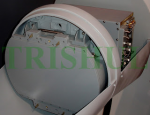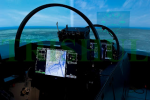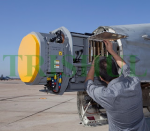Decoding The IAF’s Latest RFI On MRCA Requirement
RFI: The proposal is to procure approximately 110 MRCAs (about 75% single seat and rest twin-seat aircraft). The procurement should have a maximum of 15% aircraft in flyaway state and the remaining 85% aircraft will have to be made in India by a Strategic Partner/Indian Production Agency (SP/IPA). The aircraft are intended as day and night-capable, all weather MRCA which can be used for the following roles:- (a) Air Superiority (b) Air Defence (c) Air-to-Surface Operations (d) Reconnaissance (e) Maritime Strike (f) EW missions, Buddy-Buddy Refuelling etc. The selected MRCA would be required to be integrated with weapons/sensors/systems of Indian origin/any other origin, at any time of its service life. The vendor is to provide the user the capability to unilaterally upgrade/integrate such systems, weapons or sensors. The vendor would be required to integrate certain Buyer Furnished Equipment/Buyer Nominated Equipment (BFE/BNE) and it is essential that test pilots and engineers of the IAF or their assignees be involved in flight-testing of such equipment during integration and certification phases. The transferred technology should be state-of-art to ensure rapid build-up of indigenous design & development, production and maintenance capabilities for the aircraft, its sub-systems and support equipment. Transfer of Technology (ToT) should encompass transfer of know-how/know-why and should be comprehensive, covering design, manufacturing know-how and detailed technical information, which will enable the Indian Production Agency(ies) to manufacture, assemble, integrate, test, install and commission, use, repair, overhaul, support, obsolescence management, life extension and maintain the aircraft, including the capability for future integration of systems and weapons.
RFI: The transferred know-how/know-why should contain possibilities for design/development/sourcing/integration/production/maintenance (O, I & D levels)/upgrade, as applicable. Further, the transferred capabilities/technologies should be capable of being utilised/implemented across platforms, more significantly, in the ongoing and futuristic programmes. The arrangement ToT shall be such that the Indian Production Agency(ies) are able to procure components/sub-assemblies/raw material/test equipment directly from OEM’s subcontractors/vendors. Is the OEM willing to transfer design data (for stress, fatigue, performance, qualification, environmental test, life (calendar/total/overhaul), where applicable), development, manufacturing and repair expertise within India?
Analysis: No OEM will ever share the design data of its MRCA, period. The only time when the IAF had obtained such data was when India procured the Folland Gnat in the late 1950s and the UK had then agreed to transfer the Gnat’s entire design data because that aircraft was rejected for service-induction by the Royal Air Force.
RFI: It should be possible to indigenously integrate new weapons and avionics of Indian, Western and Russian origins.
Analysis: This again is another impossibility now, since in the aftermath of Russia’s April 2014 invasion of Ukraine and the subsequent annexation of Crimea, Western sanctions were levied against Russia and since then it has become impossible for Western aerospace OEMs to share design/engineering data with their Russian counterparts, which in turn rules out integration of Western weapons on Russia-origin platforms and integration of Russia-origin weapons on West-origin platforms.
RFI: The Government of India invites responses to this request only from Original Equipment Manufacturers/ Government-sponsored export agencies (applicable only in the case of countries where domestic laws do not permit direct export by OEMs).
Analysis: This is specifically meant for accommodating Russia’s Rosobopronexport State Corp, since Russian Aircraft Corp cannot bid independently as an OEM for any procurement contract outside Russia.
RFI: Is the aircraft and its systems tropicalised?
Analysis: Except for the MiG-35, all other prospective contenders are tropicalised.
RFI: Can the aircraft fly in excess of 10 hours with air-to-air refuelling (AAR)? How many AAR engagements would be required to accomplish this duration of flight?
Analysis: This is an absolute physiological/biological absurdity, since the aircrew of both both single-seat and tandem-seat MRCAs can at best function optimally only up to six flight-hours.
RFI: Does the engine/s have life monitoring mechanism such as Health Usage and Monitoring System (HUMS)?
Analysis: All turbofans barring the Russia-origin ones have this capability as standard fit nowadays.
RFI: Are the refuelling couplings/adapters of NATO Standard?
Analysis: This means the IAF wants the MRCA to be compatible with Cobham of UK’s Type 754 aerial refuelling pod, which is already in service with the IAF’s Su-30MKIs. What it also means is that the MiG-35 will not be compatible with this pod, thanks to the Western sanctions imposed against Russia, due to which the Russian and British OEMs will not be able to jointly undertake systems integration flight-trials.
RFI: Is the aircraft integrated with a NATO-standard buddy refuelling pod? What is the minimum refuelling rate from this pod?
Analysis: Barring the MiG-35 and members of the Su-30 family of MRCAs, all others can easily make use of the Type 754 AAR pod. What this also means is that by specifying its preference for a NATO-standard refuelling pod, the IAF is rejecting the Russian UPAAZ-1 pod, which is used by the Indian Navy’s MiG-29Ks.
RFI: Would it be possible for the production agency/user to upgrade/integrate the MFD, HUD and HMSD display symbologies without the help of OEM?
Analysis: It will be impossible since such software algorithms are proprietary and their IPRs are never shared with anyone else. And more importantly, such a capability is simply not an operational necessity.
RFI: Does the aircraft provide adequate clearance between the pilot's Helmet-Mounted Sight and Display (HMSD/Night Vision Goggle (NVG) and the canopy, during movement of pilot's head to either extreme?
Analysis: With the advent of holographic HUDs into which night vision imagery from target acquisition/designation pods can be superimposed, the usage of NVGs by MRCA aircrews has been done away with.
RFI: What is the type and capacity of integral onboard oxygen system? Does the system have Onboard Oxygen Generating System (OBOGS)?
Analysis: Barring Ruissia-origin MRCAs, all other contemporary MRCAs have OBOGS.
RFI: Is there a facility to allow the crew-members to relieve themselves and take provisions in-flight? Is there a specific stowage area for carrying provisions on-board?
Analysis: Again, a needless absurdity. While on-board provisions can be carried, where’s the need for built-in toilets?
RFI: Does it have a provision to carry a Personal Rescue Beacon (PRB)/Personal Locator Beacon (PLB)? Would it be possible for vendor to integrate PRB/PLB specified by the IAF? Does the PRB offered by vendor have search-and-rescue (SAR) and combat SAR (CSAR) mode?
Analysis: This capability is available on all Westsern MRCAs. However, the IAF’s UK-origin PRB/PLB systems can no longer be integrated with the MiG-35 or Su-35.
RFI: Does it have Non-Cooperative Target Recognition (NCTR) capability? Can IAF-specified NCTR data be integrated?
Analysis: The NCTR mode is available only on those MRCAs that are in service with the NATO member-states. But if the Govt of India is unable/unwilling to sign on to the CISMOA agreement, the NCTR mode will be unavailable to the IAF.
RFI: Does the aircraft have a computer-based health monitoring and maintenance management system for comprehensive management of maintenance activities for the aircraft?
Analysis: All MRCAs have them, but the Russia-origin MRCAs have yet to demonstrate the reliability of such on-board systems.
RFI: Does the MRCA have provision to support integration of user-specified air-to-air missile?
Analysis: Only is the user-specified BVRAAM is the Astra, since both Western and Russian OEMs are now barred from seamlessly integrating their AAMs with one anothers’ MRCA platforms.
RFI: What is the flight envelope with the deployed towed decoy? Does it restrict the aircraft manoeuvrability or the operational envelope?
Analysis: Aircraft manoeuvrability will definitely be affected as dictated by the laws of physics, but not the operationbal flight envelope.
Conclusions: The insistence on licenced-manufacturing will make the entire procurement effort cost-prohibitive. The concept of Make-in-India cannot at any cost supercede budgetary realities. The IAF’s preference for NATO-standard hardware performance specifications will definitely make any Russian offer the underdog. And since it will be financially impossible to licence-build the EF-2000 and Rafale, that then leaves only the F-16 Block-70, F/A-18E/F Advanced Super Hornet and JAS-39 Gripen NG in the fray. From these three, only the F/A-18E/F Advanced Super Hornet offers a decent buddy-buddy aerial refuelling capability. But will the US State Department allow non-US avionics and weapons to be integrated with the Advanced Super Hornet when it has never done so?
TRISHUL: Decoding The IAF’s Latest RFI On MRCA Requirement
RFI: The proposal is to procure approximately 110 MRCAs (about 75% single seat and rest twin-seat aircraft). The procurement should have a maximum of 15% aircraft in flyaway state and the remaining 85% aircraft will have to be made in India by a Strategic Partner/Indian Production Agency (SP/IPA). The aircraft are intended as day and night-capable, all weather MRCA which can be used for the following roles:- (a) Air Superiority (b) Air Defence (c) Air-to-Surface Operations (d) Reconnaissance (e) Maritime Strike (f) EW missions, Buddy-Buddy Refuelling etc. The selected MRCA would be required to be integrated with weapons/sensors/systems of Indian origin/any other origin, at any time of its service life. The vendor is to provide the user the capability to unilaterally upgrade/integrate such systems, weapons or sensors. The vendor would be required to integrate certain Buyer Furnished Equipment/Buyer Nominated Equipment (BFE/BNE) and it is essential that test pilots and engineers of the IAF or their assignees be involved in flight-testing of such equipment during integration and certification phases. The transferred technology should be state-of-art to ensure rapid build-up of indigenous design & development, production and maintenance capabilities for the aircraft, its sub-systems and support equipment. Transfer of Technology (ToT) should encompass transfer of know-how/know-why and should be comprehensive, covering design, manufacturing know-how and detailed technical information, which will enable the Indian Production Agency(ies) to manufacture, assemble, integrate, test, install and commission, use, repair, overhaul, support, obsolescence management, life extension and maintain the aircraft, including the capability for future integration of systems and weapons.
Analysis: Firstly, licence-producing MRCAs like the Lockheed Martin F-16 Block-70 or Boeing F/A-18E/F Advanced Super Hornet or the Saab JAS-39 Gripen NG or MiG-35 right down to the component-level will hike the cost of procuring such MRCAs by 2.5 times, just as was the case with the Su-30MKI. Secondly, MRCAs like the Eurofighter EF-2000 and Rafale will be IMPOSSIBLE to licence-build in In dia simply because of the cost of setting up a local production line, which will work out to be up to 5 times more expensive than procuring such MRCAs off-the-shelf. As for buddy-buddy refuelling, only the MiG-35 and F/A-18E/F Advanced Super Hornet are qualified for such a role.RFI: The transferred know-how/know-why should contain possibilities for design/development/sourcing/integration/production/maintenance (O, I & D levels)/upgrade, as applicable. Further, the transferred capabilities/technologies should be capable of being utilised/implemented across platforms, more significantly, in the ongoing and futuristic programmes. The arrangement ToT shall be such that the Indian Production Agency(ies) are able to procure components/sub-assemblies/raw material/test equipment directly from OEM’s subcontractors/vendors. Is the OEM willing to transfer design data (for stress, fatigue, performance, qualification, environmental test, life (calendar/total/overhaul), where applicable), development, manufacturing and repair expertise within India?
Analysis: No OEM will ever share the design data of its MRCA, period. The only time when the IAF had obtained such data was when India procured the Folland Gnat in the late 1950s and the UK had then agreed to transfer the Gnat’s entire design data because that aircraft was rejected for service-induction by the Royal Air Force.
RFI: It should be possible to indigenously integrate new weapons and avionics of Indian, Western and Russian origins.
Analysis: This again is another impossibility now, since in the aftermath of Russia’s April 2014 invasion of Ukraine and the subsequent annexation of Crimea, Western sanctions were levied against Russia and since then it has become impossible for Western aerospace OEMs to share design/engineering data with their Russian counterparts, which in turn rules out integration of Western weapons on Russia-origin platforms and integration of Russia-origin weapons on West-origin platforms.
RFI: The Government of India invites responses to this request only from Original Equipment Manufacturers/ Government-sponsored export agencies (applicable only in the case of countries where domestic laws do not permit direct export by OEMs).
Analysis: This is specifically meant for accommodating Russia’s Rosobopronexport State Corp, since Russian Aircraft Corp cannot bid independently as an OEM for any procurement contract outside Russia.
RFI: Is the aircraft and its systems tropicalised?
Analysis: Except for the MiG-35, all other prospective contenders are tropicalised.
RFI: Can the aircraft fly in excess of 10 hours with air-to-air refuelling (AAR)? How many AAR engagements would be required to accomplish this duration of flight?
Analysis: This is an absolute physiological/biological absurdity, since the aircrew of both both single-seat and tandem-seat MRCAs can at best function optimally only up to six flight-hours.
RFI: Does the engine/s have life monitoring mechanism such as Health Usage and Monitoring System (HUMS)?
Analysis: All turbofans barring the Russia-origin ones have this capability as standard fit nowadays.
RFI: Are the refuelling couplings/adapters of NATO Standard?
Analysis: This means the IAF wants the MRCA to be compatible with Cobham of UK’s Type 754 aerial refuelling pod, which is already in service with the IAF’s Su-30MKIs. What it also means is that the MiG-35 will not be compatible with this pod, thanks to the Western sanctions imposed against Russia, due to which the Russian and British OEMs will not be able to jointly undertake systems integration flight-trials.
RFI: Is the aircraft integrated with a NATO-standard buddy refuelling pod? What is the minimum refuelling rate from this pod?
Analysis: Barring the MiG-35 and members of the Su-30 family of MRCAs, all others can easily make use of the Type 754 AAR pod. What this also means is that by specifying its preference for a NATO-standard refuelling pod, the IAF is rejecting the Russian UPAAZ-1 pod, which is used by the Indian Navy’s MiG-29Ks.
RFI: Would it be possible for the production agency/user to upgrade/integrate the MFD, HUD and HMSD display symbologies without the help of OEM?
Analysis: It will be impossible since such software algorithms are proprietary and their IPRs are never shared with anyone else. And more importantly, such a capability is simply not an operational necessity.
RFI: Does the aircraft provide adequate clearance between the pilot's Helmet-Mounted Sight and Display (HMSD/Night Vision Goggle (NVG) and the canopy, during movement of pilot's head to either extreme?
Analysis: With the advent of holographic HUDs into which night vision imagery from target acquisition/designation pods can be superimposed, the usage of NVGs by MRCA aircrews has been done away with.
RFI: What is the type and capacity of integral onboard oxygen system? Does the system have Onboard Oxygen Generating System (OBOGS)?
Analysis: Barring Ruissia-origin MRCAs, all other contemporary MRCAs have OBOGS.
RFI: Is there a facility to allow the crew-members to relieve themselves and take provisions in-flight? Is there a specific stowage area for carrying provisions on-board?
Analysis: Again, a needless absurdity. While on-board provisions can be carried, where’s the need for built-in toilets?
RFI: Does it have a provision to carry a Personal Rescue Beacon (PRB)/Personal Locator Beacon (PLB)? Would it be possible for vendor to integrate PRB/PLB specified by the IAF? Does the PRB offered by vendor have search-and-rescue (SAR) and combat SAR (CSAR) mode?
Analysis: This capability is available on all Westsern MRCAs. However, the IAF’s UK-origin PRB/PLB systems can no longer be integrated with the MiG-35 or Su-35.
RFI: Does it have Non-Cooperative Target Recognition (NCTR) capability? Can IAF-specified NCTR data be integrated?
Analysis: The NCTR mode is available only on those MRCAs that are in service with the NATO member-states. But if the Govt of India is unable/unwilling to sign on to the CISMOA agreement, the NCTR mode will be unavailable to the IAF.
RFI: Does the aircraft have a computer-based health monitoring and maintenance management system for comprehensive management of maintenance activities for the aircraft?
Analysis: All MRCAs have them, but the Russia-origin MRCAs have yet to demonstrate the reliability of such on-board systems.
RFI: Does the MRCA have provision to support integration of user-specified air-to-air missile?
Analysis: Only is the user-specified BVRAAM is the Astra, since both Western and Russian OEMs are now barred from seamlessly integrating their AAMs with one anothers’ MRCA platforms.
RFI: What is the flight envelope with the deployed towed decoy? Does it restrict the aircraft manoeuvrability or the operational envelope?
Analysis: Aircraft manoeuvrability will definitely be affected as dictated by the laws of physics, but not the operationbal flight envelope.
Conclusions: The insistence on licenced-manufacturing will make the entire procurement effort cost-prohibitive. The concept of Make-in-India cannot at any cost supercede budgetary realities. The IAF’s preference for NATO-standard hardware performance specifications will definitely make any Russian offer the underdog. And since it will be financially impossible to licence-build the EF-2000 and Rafale, that then leaves only the F-16 Block-70, F/A-18E/F Advanced Super Hornet and JAS-39 Gripen NG in the fray. From these three, only the F/A-18E/F Advanced Super Hornet offers a decent buddy-buddy aerial refuelling capability. But will the US State Department allow non-US avionics and weapons to be integrated with the Advanced Super Hornet when it has never done so?
TRISHUL: Decoding The IAF’s Latest RFI On MRCA Requirement













